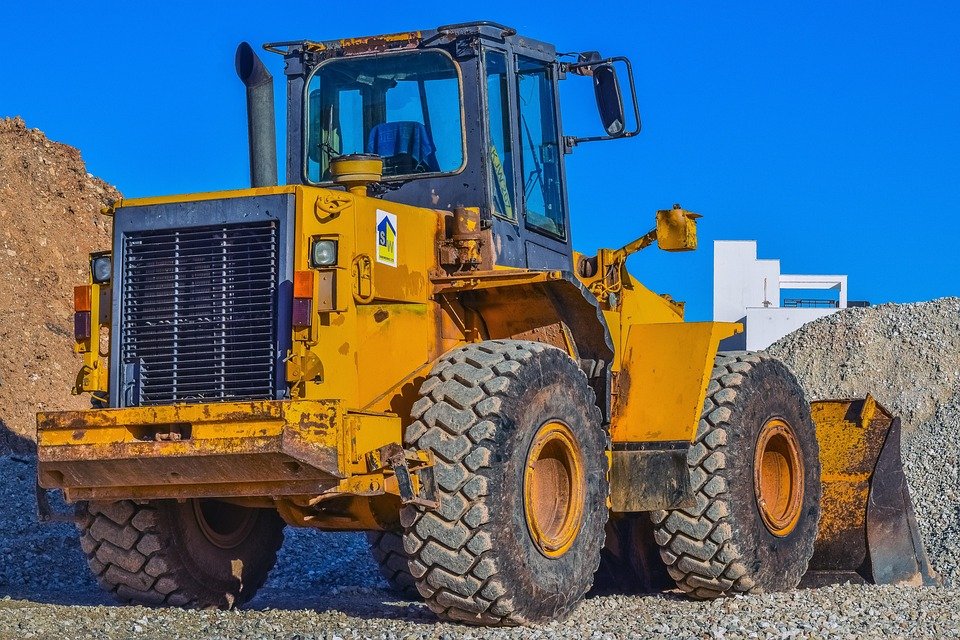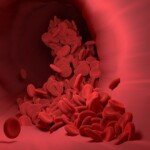Beyond Sparks: Master the precise world cuts seen by CNC
While flashy laser cutters and roaring plasma torches often make headlines in modern manufacturing, the foundation for countless industries is a quieter, very reliable mainstay: CNC SAW. At Greatlight, where precise places are most important in our advanced five-axis CNC machining service, we gain insight into the perfect part of the journey often starts with perfect cutting. Let’s dig into the basic basics of CNC SAW cutting – the cornerstone of effective, accurate and multifunctional material preparation.
What Exactly Does CNC see the cutting?
From its core, Computer Numerical Control (CNC) SAW cutting is an automated process using electric, computer-controlled saw blades through material slices. "CNC" Indicates each movement – blade position, feed rate (speed of movement of blades through material), cutting speed (speed of blade rotation) and cutting pressure – determined by pre-programmed instructions. This replaces manual operations or older mechanical setups, bringing unprecedented consistency and complexity to what once was a relatively simple task. Think of it as robotic accuracy, suitable for basic separation behavior.
Why choose the other cutting methods seen by CNC?
- Unrivaled accuracy and repeatability: This is a game-changer. Once programmed, the distance that CNC sees will create is very tight (usually one thousandth of an inch/mm), cut after cutting after cutting. Manual saws simply cannot compete for consistency.
- Excellent efficiency and speed: The automated process greatly reduces operator fatigue and allows significantly faster cycle times, especially for high-volume production operations. Load, cut and unload become valid sequences.
- Enhanced security: The operator manages the machine from the control panel to keep it safely distance from powerful cutting movements and moving parts. Integrated security features further mitigate risks.
- Multifunctionality of complexity: Although basic, CNC saws are not limited to straightforward. Modern machines can handle complex multi-step operations, such as:
- Level of accuracy
- Complex cutout pattern
- A programmatic cutting sequence
- Multi-pole cutting (feed multiple stocks simultaneously)
- Reduce material waste: Precise programming means optimized cutting paths, nested cuttings are tightly joined together and minimize KERF (material removed by blade width), thus saving a lot of expensive raw materials.
- Excellent finish: When equipped with the correct insert and optimal parameters, the CNC saw produces very smooth cutting edges, often reducing or even eliminating auxiliary finishing operations such as grinding or milling.
- Material versatility: From common metals such as aluminum and steel (various alloys) to non-metals (brass, copper), plastics, composites, and even wood, right CNC SAW and blade configurations can solve a wide range of solid and structural materials.
Key components of CNC SAW system:
- Machine Framework: Reliable structure provides stiffness, stability and vibration suppression – accuracy is crucial.
- Control system (CNC controller): this "brain" This can explain programmed G-code or proprietary code that translates instructions into precise motion motion (usually Siemens, Fanuc or proprietary brands).
- Cut head and spindle: Hold and drive the saw blade at high rotation speed. Gearless servo motors are becoming more common, for smoother operation and stricter control.
- Vise/Clamping System: During high-strength cutting, the workpiece can be ensured not to move. Can be manual, pneumatic or hydraulic, usually with a multifunctional jaw. Proper clamping is Critical For accuracy and safety.
- Feed system: Move the stock material accurately into the blade or move the blade assembly into a fixed inventory (depending on the machine design). Rolling bolts and linear guides ensure smooth, precise movement.
- Saw knife: The key consumption! The blade selection (diameter, material, tooth count, tooth geometry, set) is 100% dependent on the material cut and the required finish.
- Hot saw blade: High-speed steel (HSS) or special high-temperature alloys, usually used with coolant for solid metals. Hot cut by shear/friction.
- Cold saw blade: Carbide tip blades, cut by shear/debris. Produces cool cuts, less burrs and excellent finishes. Usually the first choice for precise work.
- Coolant system: For cooling blades and workpieces (especially important for hot saw metals), reducing friction, rinsing debris, and extending blade life are crucial.
- Partial processing: A conveyor may include a moving cutting piece or a stacking mechanism.
CNC sees the cutting process flow:
- Programming and Settings:
- Use CAD/CAM software or the computer’s onboard controller to generate a cutting program (G code).
- Define material type, size (stock and cut pieces), cutting path, speed, feed, coolant application.
- Select and install the appropriate saw blade.
- Securely clip the workpiece in the vise.
- Set the blade height and make sure it is aligned correctly.
- Operation:
- Load the program and start the cycle.
- Automatic sequence start: feed moves inventory to position/blade drops & cuts/lifts that may be made for chips/multi-pass cutting may be made.
- Coolant is usually used continuously.
- The process repeatedly defines the number of cuts.
- Finish:
- The machine stops at the end of the cycle.
- The slice is uninstalled.
- Check blade condition and machine.
CNC sees cutting on the journey to finish the part (Gremight Advantage):
At Greatlight, we recognize that CNCs often see a critical first step in the larger manufacturing process. Although we do well in complex five-axis machining solutions, producing complex geometry from solid metal blocks (billets) offers significant advantages starting with precisely cut inventory:
- Optimized material use: Starting with near-mesh blanks, excess material from the CNC mill can be minimized to save time and cost of expensive alloys.
- Improved processing accuracy and stability: Accurate square sum dimension blanks provide a more reliable benchmark for fixing and citing our five-axis machines, thus improving overall part accuracy.
- Cost Efficiency: Combining precise inventory preparation with our advanced machining capabilities creates a simplified, cost-effective workflow, especially for parts that require initial large-capacity material removal.
- One-stop function: We provide complete chains – use CNC saws (or other methods) to accurately cut the raw materials and then perform complex five-axis machining and completion (processing, polishing, anodizing, electroplating, etc.). A partner, seamless process.
An essential foundation
The cutting seen by CNC is much more complicated than at first glance. It represents the fusion of traditional saw principles and digital control, leading to the foundation of modern manufacturing. Its advantages in precision, speed, safety and versatility make it an essential tool to effectively turn raw materials into blanks and components, thus fueling further manufacturing and processing.
Choosing the right partner for your cutting needs, especially when it is seamlessly integrated with complex downstream processes such as five-axis machining, is critical to project success. Here, Greatbight Steps enters – leverages precise cutting as a powerful first step to delivering excellent manufacturing parts.
in conclusion
Whether you need hundreds of precisely sized blanks for further machining or need components that directly meet the strict specifications of sawing, understanding the fundamentals of CNC sawing enhances better procurement decisions. This is not just a separate material; it is to determine the accuracy, efficiency and quality benchmarks of all the following things. At Greatlight, our commitment to precision will permeate every stage, starting with our ability to provide perfect inventory cuts or integrate cutting into a larger custom manufacturing workflow. Combining advanced CNC SAW technology with our industry-leading five-axis machining expertise and comprehensive finishing service creates unrivalled solutions for your most demanding metal parts needs, delivered quickly at competitive prices.
FAQ (FAQ): CNC sees cutting
-
What materials does CNC see to cut?
- CNCs perform well in cutting solids and structural shapes. Common materials include: aluminum (alloy), steel (gent, carbon, stainless steel, alloy), brass, copper, bronze, plastic (PVC, acrylic, nylon, PE), composite materials and some wood types. The choice of blades is absolutely crucial and varies greatly depending on the material.
-
How fast does CNC see cutting speed?
- Speeds vary widely depending on material thickness, hardness, blade type, machine power and the required finish. In general, it is much faster than a manual saw, especially for multiple identical cuts and is more competitive than laser/plasma for thicker solid cross-sections.
-
What kind of finish can I expect?
- Well maintained CNC saws with the correct blades and optimized parameters produce very smooth cutting edges, usually comparable to secondary finishes. Cold saws with carbide blades can often provide the best finish on metal, minimizing burrs. Completion requirements should be assigned to the operator.
-
Do I need to provide CAD/CAM files?
- While providing CAD files for the final finished parts is ideal, for cutting it is mainly about the size, angle and number of cut blocks. Detailed drawings with precise lengths, required angles (troublesome) or notch details are crucial. Your manufacturer (like Greatlight) can usually be programmed to detailed written specifications.
-
How important is clamping?
- Very important! For safety, accuracy, blade life and surface finish, safety, vibration-free clamping is not commercially acceptable. Incorrect clamping can cause partial movement during the cutting process, damage to parts, blades and potentially cause safety hazards.
-
What tolerances can CNC SAW cutting achieve?
- It depends on the machine condition, blade type, material and cutting length. However, precise CNC saws reliably maintain tolerances ±0.005 inches (0.13 mm) or in higher aspects of length and angle cutting schemes. Under certain conditions, stricter tolerances can be achieved.
-
What are the advantages and disadvantages of laser cutting and other methods?
- Advantages (SAW): Thicker solid parts (especially metals), usually at a lower cost per meter, thicker materials, good straightforwardness/convenience, length exceeds the availability, suitable for cutting bundles of materials, usually better done on thicker materials.
- Disadvantages (SAW): Complex internal contour challenge (laser effect here!), maximum width defined by blade size (no infinite "sheet" Cut like plasma/laser), different blades are required to be used for different materials, loss of material through kerf width. Laser/plasma is usually faster for thin plates/complex shapes.
-
How does Burr manage it?
- Burr formation depends heavily on blade type/clearity, material and feed rate/speed. Cold saws usually produce less burrs. The machine may provide accessories for burrs, or mild secondary burrs may be required on certain materials/edges. Discuss your Burr requirements.
-
CNC saw suitable for prototyping and Production?
- Absolutely! marvelous:
- prototype: Quickly craft accurate test pieces from solid stock, usually faster and cheaper than initially machining the entire part.
- Low capacity production: Ideal for precise components directly from saw or requiring minimal secondary operations.
- Mass production: Efficiently produce a large number of the same blanks for downstream operations.
- Absolutely! marvelous:
- What makes the advantages that CNC saws need unique?
While we offer independent precision CNCs with excellent speed and accuracy (most materials are quickly customized!), our real difference is Integration. We seamlessly combine expert saws with our world-class five-axis CNC machining and completion capabilities. Is it necessary to optimize clear tiles for complex five-axis machining? Do structural components that need to be sawed to high standards? You will get precise cutting, engineering-grade machining, and comprehensive handling with skilled under one roof (full one-stop service) to ensure maximum quality control and efficiency throughout the life cycle of the project – all of which are the most competitive pricing.
Customize your precise journey. From the first edit to the final finish, please trust great.


















